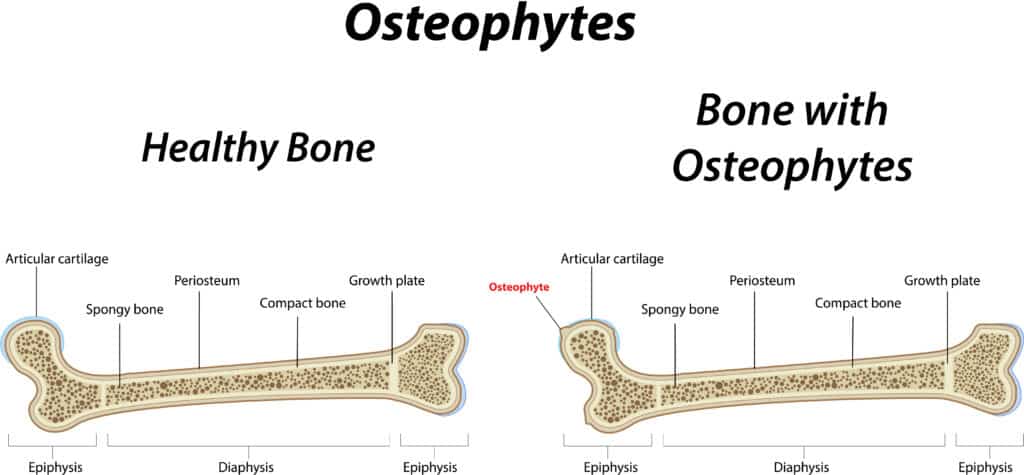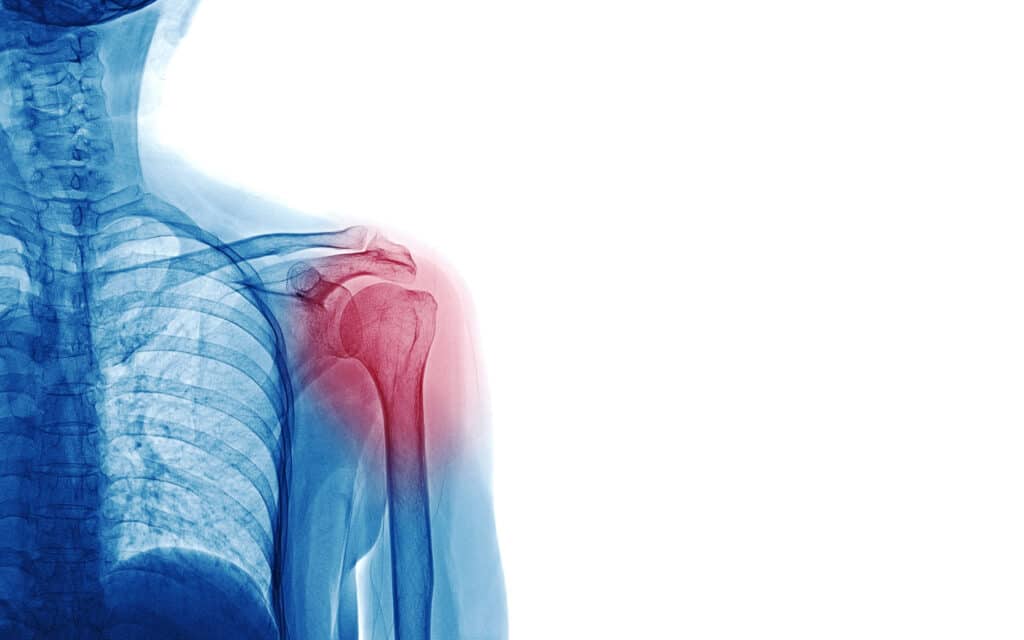6 Ways to Treat Shoulder Bone Spurs
Bone spurs in your shoulders are growths that form when your shoulder bones rub against each other. Spurs in the shoulders may also develop due to degenerative joint conditions like arthritis or as a result of an injury. Sometimes, these bony growths cause pain or impact movement, but not always. Depending on how shoulder bone spurs impact your life, you may choose to do nothing. Other treatment options include home care and surgery.
What are bone spurs?

Bone spurs are medically referred to as osteophytes. They generally form due to tissues in the shoulder joint deteriorating, which causes the shoulder bones to rub together. Over time, this rubbing leads to the formation of a bony prominence called a bone spur. Bone spurs can be pointy and sharp or smooth. Like loose bodies of the shoulder, which are small pieces of broken bone or cartilage, bone spurs do not always cause symptoms.
What does a bone spur feel like?
Bone spurs in the shoulder aren’t always noticeable. Especially when they first form, they may not cause any symptoms. Sometimes, you may not even know you have a bone spur in your shoulder unless you are diagnosed with a related underlying condition.
However, as the underlying cause of bone spur formation progresses, you may feel discomfort and pain. If bone spurs grow large enough to press on nerve endings or tendons or if you have shoulder bursitis, your shoulder may hurt.
Other symptoms of a shoulder bone spur include:
- Obvious swelling and inflammation in the shoulder area
- Numbness, tingling, tenderness, or pain in your shoulder
- Sharp pain that stretches across your back or down your arm
- Pain when your arm is extended overhead, as is also common with impingement syndrome
- Shoulder stiffness or muscle spasms
- A decreased range of motion
- Pain that interferes with your daily life, such as playing sports, driving, or picking things up
- A visible lump

If you have any of these symptoms, see your orthopedic shoulder specialist. To diagnose bone spurs, they will perform a physical exam. They’ll ask about your medical history, such as accidents, injuries, and family health. Your specialist will also use imaging tests like X-rays, an MRI, or CT scans to confirm whether you have extra growth extending off your bones.
These tests may reveal you have labral tears, tears in your rotator cuff, or other abnormalities. Your specialist may also order labs like blood tests to check whether you have underlying conditions that could make spur development more likely.
What causes bone spurs?
Arthritis is an underlying condition commonly associated with bone spur development. Osteoarthritis (caused by aging or injury), rheumatoid arthritis (an autoimmune condition), and ankylosing spondylitis (arthritis that affects joints in your spine) can cause bone spurs. They may also form if you have tendonitis, have suffered shoulder injuries, or have shoulder instability.
You may be more likely to see bone spurs form if you:

- Play sports like tennis, baseball, or golf that require repeated use of your shoulder
- Regularly lift objects over your head as part of your job
- Injured your shoulder in an accident
- Don’t exercise regularly, as exercise strengthens bones and joints
- Are overweight or obese
- Have a family history of OA or other degenerative joint conditions
The formation of bone spurs is more likely as you get older. As your joints experience injuries and general wear and tear, various tissues will deteriorate, and bone spurs can naturally develop as the body’s way of protecting your shoulder.
Shoulder Bone Spur Treatments
To treat bone spurs, your shoulder specialist may ask you to begin with several home and in-office treatment options, such as:
- Activity modification: Resting your shoulder for a period to allow inflammation to decrease may help reduce pain associated with bone spurs in shoulders. You may need to take a break from using that arm for overhead movements to soothe irritated tendons and ligaments.
- Over-the-counter (OTC) or prescription pain relievers: Your shoulder specialist may recommend you take non-steroidal anti-inflammatory OTC medications to help with pain and reduce inflammation.
- Heat and ice: You may be asked to rotate between applying a wrapped ice pack or heating pad in 20- to 30-minute increments.
- Steroid injections: Your specialist may inject cortisone to help manage pain and inflammation.
- Physical therapy: Physical therapy can help you increase strength and mobility in your shoulder. It can also help you develop proper movements to prevent additional bone-on-bone rubbing that increases bone spur formation.
- Exercise: Regular exercise can not only help you stretch your shoulder, exercise has been shown to decrease pain.
If these treatments do not sufficiently relieve your symptoms and allow you to enjoy your preferred quality of life, your specialist may recommend shoulder surgery. A common surgical procedure for shoulder bone spurs is arthroscopy. In arthroscopic bone spur surgery, your shoulder surgeon will make a small incision through which they’ll insert a camera. Using the camera to examine the area, they can pinpoint damaged tissue and excess bone and perform surgery to remove it.
In rare instances, you may benefit from shoulder replacement surgery. This is generally recommended only when your bone spurs are a symptom of a larger underlying condition, such as arthritis.
Remember, not all bone spurs cause pain or require treatment. But if these bony projections are impacting your life and you’d like to speak with an orthopedic shoulder specialist, please comment below or contact us.
Leave a Reply